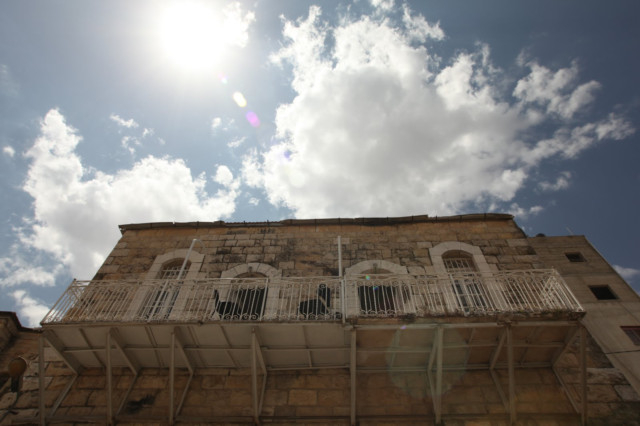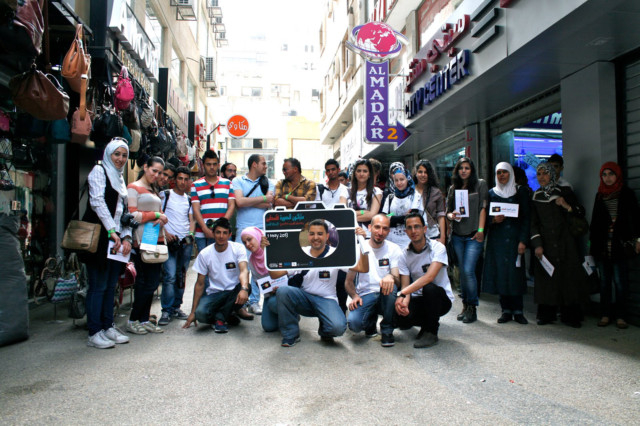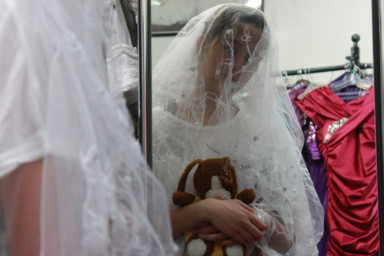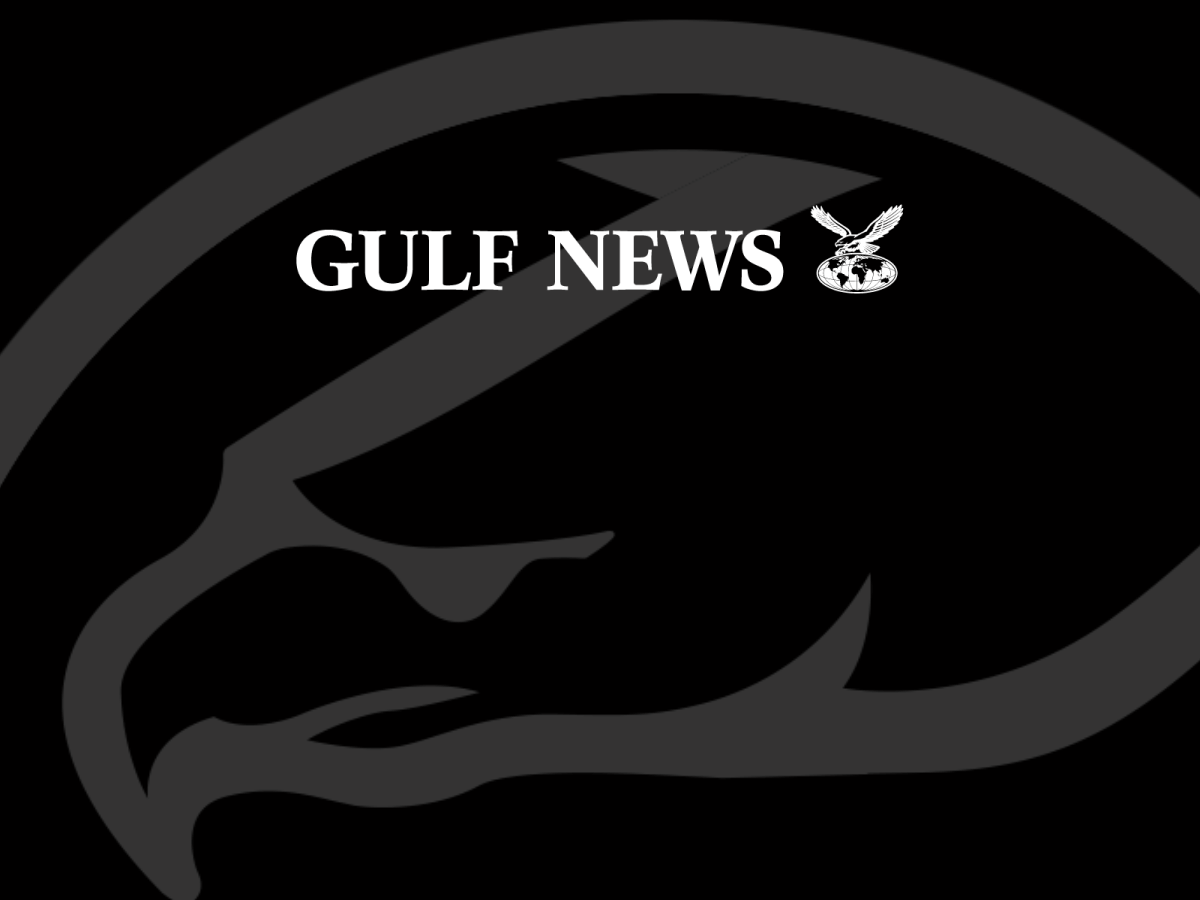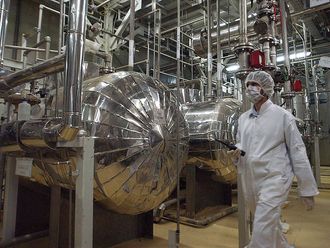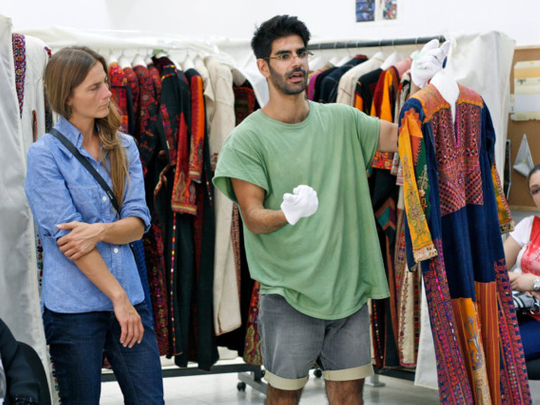
Nestled in an old building in downtown Ramallah is the Danish House in Palestine. A non-governmental, people-to-people initiative, the Danish House seeks to enhance relations between the Palestinian and Danish communities.
“The purpose of the Danish House is to build a bridge between the Danish and Palestinian populations and to offer people nuances about the two cultures,” Karen Nordemann, the director, says. “We have a tendency in both Denmark and Palestine to be judgmental and perceive everything in black and white.”
Nordemann, who came to Palestine as a volunteer for the Danish House, went on to be the coordinator and now heads it. “I really like living here, the people, the job and explaining what’s going on here to Danes,” she says. “The idea of the Danish House came from a group of Danes and exiled Palestinians in Denmark, who were all looking for something to do on the ground that would not turn into the usual political talks.
“These Danish Palestinians and Danes formed an official association in Denmark in 2005 and continued working on the legalities as well as obtaining monies until 2009, with the Danish Ministry of Foreign Affairs providing 1 million krones [Dh674,900] to initiate it.”
The pilot project involved Danish chefs coming to Palestine, sharing their culinary skills with Palestinian chefs, and creating special Danish-Palestinian recipes together.
Following on from this success, the Danish House launched “Know thy engine – a Danish/Palestinian mechanics road trip”, a week-long programme in which Danish and Palestinian mechanics toured various Palestinian towns, villages and refugee camps. The team’s mobile repair clinic offered open-air workshops and onsite diagnostics, sharing professional experience and ideas.
“We want Palestinians to teach Danes too,” Nordemann says. “Although we may have easier access to fancier equipment, Palestinians are much more creative with their limited resources and, of course, we can learn from this experience. The intent is that both sides get something out of it.”
In June 2010, two Danish astrophysicists teamed up with a couple of Palestinian colleagues to build a mobile planetarium and then went on a road trip to Biddu, Nablus and Ramallah, teaching astronomy to children of all ages.
“It was an experiment about the Solar System and telescopes,” Nordemann explains. “Children were invited to come along as the young astrophysicists helped them make sense of the Universe. Essentially, astronomy became tangible for Palestinian children.”
In June 2011, a group of Danish and Palestinian textile designers embarked on a mapping expedition throughout the West Bank and the Negev to pave the way for an ambitious project that will empower Palestinian craftswomen by helping them develop traditional designs into products that will appeal to consumers abroad. “The project continued with the Danish Design School facilitating workshops conducted by Palestinian designers for students and artisans,” Nordemann says.
Josefine Gilbert, a student at the Danish Design School, had this to say about her participation in the project: “The traditional Palestinian costume is used to express the life cycle of a woman. If the man dies, she will turn her dress inside out to express her grief. When she is ready to meet a new man, she will embroider something red on the dress. And as time passes, the dress will be filled with more red embroidery. Older women, who are not interested in men anymore, will embroider with dark green thread. To get this insight into the complex relation between gender, identity and embroidery is very inspirational and something I wish to continue working with in Denmark.”
In 2012, a Danish graffiti artist engaged in a week-long outdoor workshop with Palestinian counterparts in Hebron, Bethlehem and Ramallah, with emphasis on using humour in paintings and sprayings. The project was entitled “Our Street, Our Art”.
“The Danish House also screens films, stages concerts and facilitates couch talks in an informal setting, one of them having been a conversation between leading Palestinian and Danish clergy on the issue of Christian emigration, Christian Zionism and Muslim-Christian relations,” Nordemann says.
Other programmes have included a nursing exchange, a visit by Danish travel agents to learn about Palestine and market it as a tourist destination, a continuing volunteer programme focused on the youth and Danes visiting during the olive harvest to assist Palestinian farmers.
Nordemann is most passionate about the “Palestinian Photo-Marathon”, a yearly event which began in 2012, in which Palestinians and foreigners are invited to participate in a one-day photo shoot competition that involves visually interpreting a number of predetermined themes. Thereafter, a jury of professional photographers evaluates the photos and determines the winners.
“It’s open to all and participants may use their mobile phones, as it’s all about interpretation of the theme,” she says. “It also presents a platform for exhibitions in both countries. Our theme in 2013 was ‘Boiling Point’ and a lot of participants submitted photos, such as of a pot of boiling coffee, which was a very literal interpretation. One female participant from [occupied] Jerusalem submitted a photo of a girl in a bridal dress holding a teddy bear. The Danish jury member did not think much of the photo, because he did not understand the comment about the pressure of finding a suitable husband and young girls being married off too early. The Palestinian jury member saw this photo and thought it was outstanding. This particular example illustrates a lot about the cultural difference and the way we understand photos. All in all, the event tells a story in photos.
“In 2013 we went to Gaza with the Photo-Marathon and 50 participants signed up. We believe we have found a niche and we are catering to a need or desire for this form of art”.
Overall, Nordemann believes, “the Danish House in Palestine came into existence and continues to be active because we are a people-to-people initiative and because we offer a platform for cooperation between Danes and Palestinians. We are here to tell people’s stories by creating a context or framework and accord people the opportunity to fill in the details. Of course we cannot escape the fact that it mostly relates to the occupation, but that is not the focus of our stories. Our stories are about people who make do with whatever they have despite the occupation.”
Nordemann’s latest initiative has been to bring seven Palestinian journalists to Denmark, after an equal number of Danish journalists visited Palestine in September 2013, so that each group can learn from the other’s experience.
With most non-profit projects, funding and sustainability is always an issue. “We struggle like everyone else, but manage to obtain funds for projects and programmes from government or institutions and keep the house running,” Nordemann says.
Nordemann concludes on a most optimistic note: “For everyone involved in these projects, the result is always a new perception and increased understanding of the way culture and politics shape how we live and work. Meeting face to face and working side by side, participants see many common issues up close and, most of all, we have become adept at matching Danish volunteers and Palestinian organisations and managing the expectations of both.”
Rafique Gangat, author of “Ye Shall Bowl on Grass”, is based in occupied Jerusalem.


